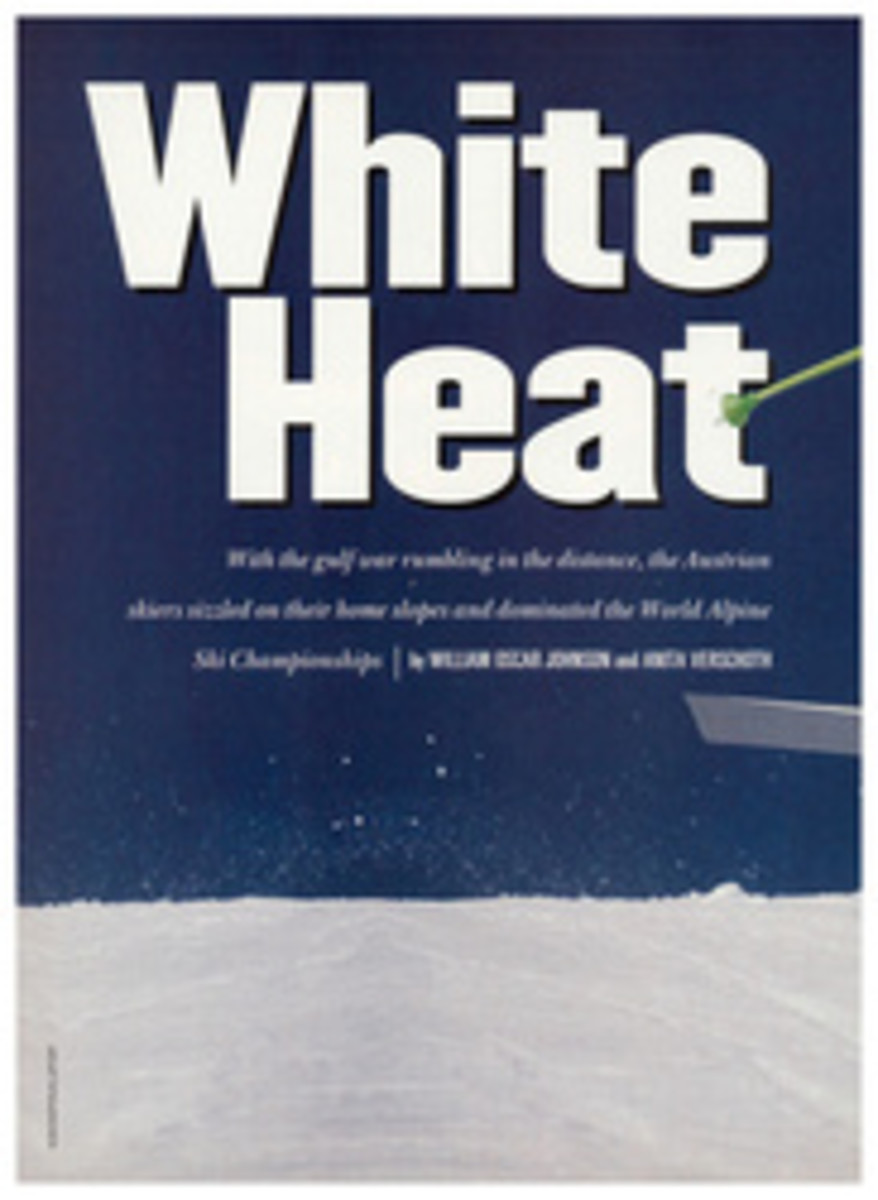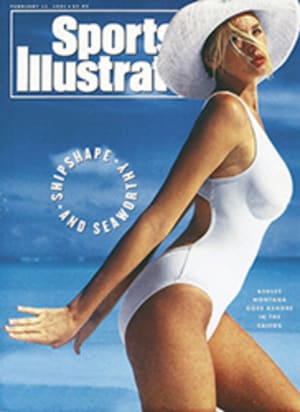
Twinkle, Twinkle, Little Comet—TWINKLE!
It's 8 p.m. and everybody else in New Mexico has finished the dinner dishes and is sitting down to watch Night Court. Not me. I'm at the stove in my goosedown underwear, 7,200 feet above sea level, cooking breakfast. Not some wimpy breakfast, mind you, but a guts breakfast: two strip steaks, four eggs, potatoes, coffee. A big pot of it. We are getting ready to view the celestial event of the year, Comet Austin.
Welcome to the Star Hill Inn, America's first resort designed to accommodate the nerds of the night. My husband, Don, and I have flown four hours and driven three more so that we, along with our Star Hill companions, can stay up all night on a windswept platform in the near-freezing temperatures of early spring, staring into the night sky.
We have joined the rapidly growing ranks of recreational astronomers. These are some 300,000 people who, while appearing normal by day, spend their nights spying on galaxies. They even have rallies and competitions and marathons. It's probably the only tick-free back-to-nature sport left, but it does get low marks in the suntan division.
As a sport, astronomy is almost as exciting as ice fishing, except that you can't drink. You can chase a whole bottle of Jack Daniel's with a six-pack and still know when you've nailed a pike. But one cup of the grape and you're likely to miss that occultation of Jupiter. Actually, astronomy is more like bird-watching since it also has a life list. My life list now numbers 31 of the 110 sky items—nebulas, star clusters and galaxies—that you need to have in order to be recognized by your peers as an amateur astronomer.
It wasn't always like this for me and my husband. I remember a time when we too would wander under the night sky and make amazing observations like, "Isn't that the Big Dipper?" Then one night early in 1986—you remember, the year of Halley's Almost Invisible Comet—I mentioned that with the comet coming and all, it would be nice if we had a telescope.
Home came, to live in the dining room of our apartment, a dandy telescope on a sturdy aluminum tripod. With this telescope, if you knew just where to look, you could find the little fuzzy ball that was Halley's. It was a sight, when actually beheld, that caused most people to say, "Uh-huh."
Not us; it changed our life. Into our home came telescope No. 2, a more powerful instrument. Easily assembled, moved and aligned by two sumo wrestlers and an astrophysicist, No. 2 allowed us to see Halley's as a much larger fuzzy ball. When scope No. 3 with its rolling support stand arrived, we bought a house.
So now we have come to Sapello, N.Mex., in the Sangre de Cristo Mountains northeast of Santa Fe with our fellow Star Hill guests—a turkey saleswoman from Virginia, a NASA physicist from Houston and a priest from Queens, N.Y. We are gathered because about three months ago, amateur comet hunter Rodney R.D. Austin in New Zealand discovered a never-before-seen fuzzy ball in the sky. The discovery made—in the world of amateur astronomy—headlines on a par with those of the Trump divorce.
We sure didn't want to miss this one. But we live in the nation's capital. What with the monument lights, car headlights, streetlights and SWAT-team searchlights, our sky is so cluttered that we would probably miss the Second Coming.
To the rescue of all us urban astronomers has come Star Hill. The inn is actually five cottages and is located under some of the country's clearest and darkest skies. Our cozy cottage came complete with a moon chart on the refrigerator and blackout shades for daytime sleeping.
I have settled into a lawn chair with a pair of 8 ‚Äö√†√∂‚àö‚â• 40 binoculars up on the inn's viewing platform near our cabin. I'm watching the constellation Draco—the Dragon—burning through the twilight. A little silver ball zooms right through it.
"Holy smokes!" I shout, "I've got a satellite." In 90 minutes, with just my trusty binoculars, I nail 11 satellites and nine meteors. But just as I am working my way into an astronomical frenzy, disaster strikes: clouds. Clouds come from the left and clouds come from the right. We try to look between them, but soon they knit together into an impenetrable black blanket. A little after midnight, we go to bed.
"Set the alarm for 3:50 a.m.," my husband says. "If the clouds move, we'll see the comet rise."
After a very short night we are back on duty on the viewing platform. "I can't see a damn thing," Don says. Half an hour passes. We eat doughnuts. The sky is clear as a bell. Except for one cloud.
"See that little cloud?" Don says. "That's exactly where Comet Austin is. Right behind that one lousy cloud." We wait. It's cold.
"The sun's going to come up pretty soon," my husband says with an urgency you might expect from Dracula uttering the same words. And then, just ever so slightly, the cloud moves.
We stand there side by side, sweeping the horizon with our binoculars.
"I've got it!" I shout. "Above the second ponderosa from the left."
"That's the Andromeda galaxy," Don says. The cloud moves a little more.
"Comet!" my husband says. "Third ponderosa. Look at the tail—pointing straight up." One doughnut later, dawn arrives, and Austin is gone.
The next night we stay up until 1:30 a.m., peeking through holes in the clouds. We find the Sombrero galaxy. We find M13, a majestic globular cluster of stars. We find the Whirlpool and Black Eye galaxies. We eat more doughnuts. We go to bed and rise at 4:30 a.m. to have a peek at the space shuttle Discovery, which is closely trailed by the Hubble telescope. An omen, that.
The next night is our last at Star Hill, and we are glum. No stars. All the guests are sitting in our cabin under an overcast sky, drinking brandies or Diet Cokes. Just after midnight, I go out to scratch the ears of a three-legged dog who has taken up residence on the porch. I blink. The sky is clear.
"Stars!" I yell. Brandies and Diet Cokes hit the coasters and everyone flies into action. The big scopes come out. The sky maps come out. The doughnuts come out. Telescopes bob and weave as people call out their sightings: M65, M66, Lagoon nebula.
At 4:30 a.m. we line up in concert to look for Austin. We mount the inn's giant binoculars, which have a wide field of view and great light-gathering ability, onto their heavy tripod. We stand side by side, scanning the eastern horizon over the ponderosas.
Then there it is. The dreaded little cloud is back. I look at the priest. He says he does not think it has appeared because we have sinned.
With only five minutes of viewing time before dawn, two people spot the comet. "There, in that break in the clouds," someone whispers. "Whoops! It's gone."
"There it is again. Right over the—uh-oh, gone again."
My husband moves the tripod and aims the binoculars at the spot where the comet should be. "Now when the cloud breaks," he tells me, "it should be right in the frame." We watch the clouds. It's getting light. We have, maybe, two minutes left. The cloud doesn't budge. Then it does.
"Got it again," one sky-scanner says, "Get it in the big binocs."
I step up to my station. In doing so, I hear two things. One is someone telling me exactly where the comet is. The other is the sound of my foot hitting a tripod leg. The tripod skitters around 60 degrees and the binoculars end up pointing at the three-legged dog.
"It's gone," the voice behind me says.
I felt bad all the way home. But a month later, just before it headed out of our solar system, Comet Austin was visible again during the dark of the moon. I was vacationing on Long Island, N.Y. It was a long shot, but at 2 a.m. I got up, put on my long underwear, goosedown housecoat and saddle shoes. I picked up my binoculars in my right hand, two doughnuts in my left. I walked out into the street. The lights of New York City made a dull glow far to the west. I stood in front of a silver Plymouth Horizon and looked for the comet to the east.
Just as I was moving my eyes south through the constellation Pegasus, the car started to clank. "Why is this car sitting here in the still of the night clanking?" I wondered. In a second, a man with a wrench stood up. I was standing eye to eye with a car thief, one much larger than myself, and I was armed only with binoculars and two doughnuts. So I did what I always do. I talked.
"Hello," I said real friendly. "Who are you?"
"Uh, uh, Ray. I'm Ray," the voice said.
"Whatcha doin'?" I said cheerfully.
"Uh, nothing," Ray said.
"Oh. Well, see, I'm just out here looking at the solar system," I said.
I could see that Ray was dressed in all black. He could see that I was dressed in a goosedown housecoat and saddle shoes, and was holding two doughnuts.
Ray contemplated the image before him. Then he took off down the road. Fast. Ray will, I'm sure, never be spotted on that street again.
But Comet Austin was. In just one hour, while Ray was still contemplating his brush with an extraterrestrial, Austin appeared, far from the ponderosas, in my own eastern sky.
It was just above the cable TV wire, where the wire goes into a mobile home. It was truly beautiful.
TWO ILLUSTRATIONS
NANCY KLOBUCAR

